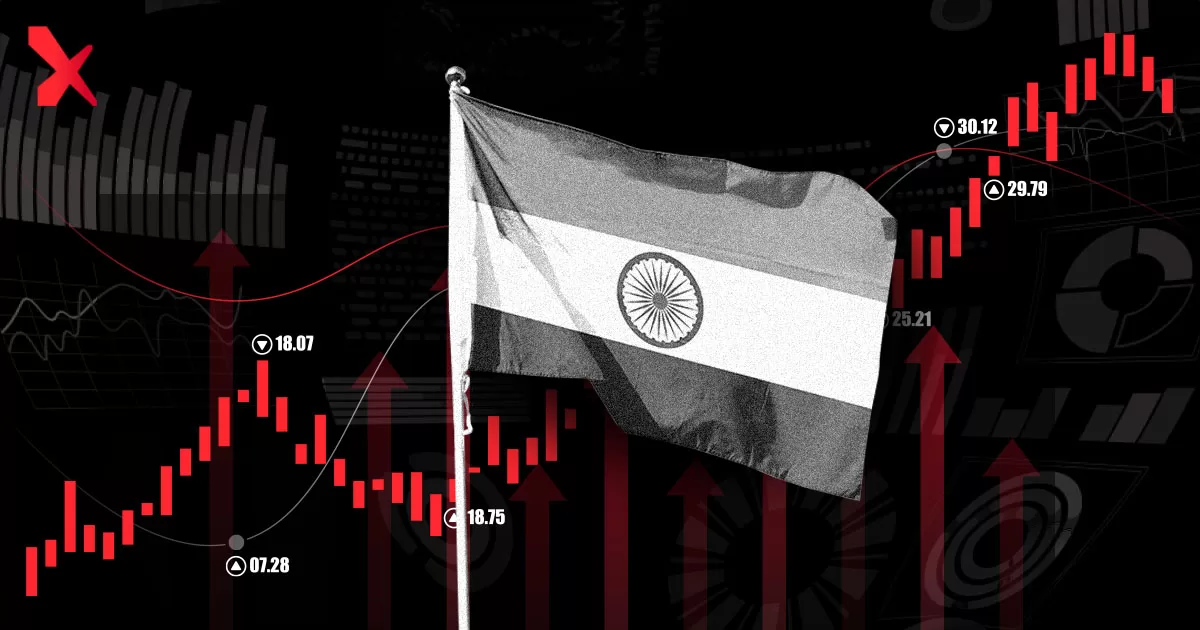Trading Signals 05/02 – 09/02
India’s Economy Takes the Lead

India is steadily advancing its economic pace and is on track to claim the world’s third-largest economy by 2030.
In the realm of Asian economics, the spotlight first shone on China’s ascent to the forefront, and now it seems to be India’s moment. Specialists, grounding their perspectives in solid data and statistics, affirm this shift. They highlight that India, once under British rule, has now outpaced its former sovereign. Consequently, India is climbing the ranks in the global economic hierarchy.
Economist Shilan Shah from Capital Economics forecasts that India is poised to secure the third spot in the global economic standings by 2030, drawing on the most recent IMF figures. Having started its independent journey in 1947, it’s fascinating to delve into what has enabled India to make this significant, though initially understated, leap.
India’s Economy: The Fastest Growing
This assertion is indeed grounded in reality. Let’s consider the UN data published in the report by the Department of Economic Affairs, with forecasts made in May 2023.
Understandably, against the backdrop of a global energy crisis, these figures might not seem optimistic. However, the numbers are quite striking. The economy of the European Union is expected to outpace the United States by only 1% (2.7% against 2.6%). Meanwhile, China’s growth is projected at 4.5%. India, however, is set to surge ahead with a remarkable 6.4% growth rate. This is despite the global economic downturn, the country’s high population density, and its relatively small geographical area. Another noteworthy statistic is that over 17 years (from 2000 to 2017), India has managed to more than triple its economic growth.
Components of Success
In the early 2000s, India managed to achieve an average annual GDP growth of 7%. The country took leading positions in crucial sectors such as financial and information services, as well as pharmaceuticals. Notably, the pharmaceutical sector carved out its niche in the global market.
The development of livestock and agriculture has also been notably successful, with India maintaining a leading position in these areas.
Key strengths of the economy include:
- For the past 15 years, the country has confidently held the second position in software development.
- Modernized production, equipped with the latest technological advancements, allows for the fulfillment of orders of any complexity.
- The value of local pharmaceuticals lies in the production of generics that match the quality of expensive originals.
- Achievements in genetic engineering and biotechnology are in high demand in Western countries.
- The petrochemical, diamond, and jewelry industries are also primarily export-oriented.
- The light automotive industry operates under Japanese licenses.
It’s important to know that in the second quarter of this year, India’s GDP grew by 13.8%. However, such a high figure is more likely an exception than the rule.
Import and Export
Firstly, it’s important to highlight the primary consumers of Indian products, which have been and remain the European Union and the United States of America. Exports to these regions account for 17% and 16% respectively, while only 4% of exported goods are destined for China.
The structure of imports and exports is very well-balanced. Essentially, these two components of the economy counterbalance each other. India positions itself as a consumer of energy resources, importing raw materials and exporting finished products.
Currently, India cannot do without hydrocarbon resources. There’s a clear shortage of energy carriers, prompting the country to focus on the development of nuclear energy. Additionally, there are ambitious plans regarding renewable energy sources. Moreover, by 2070, India aims to achieve net-zero CO2 emissions. As an intermediate goal, the country is looking at an annual production of 5 million tons of green fuel by 2030.
Development Paths
India isn’t just doing well in high-tech industries. It’s also making the most of its large number of workers. What’s special about India isn’t just that it has a lot of people.
India has lots of young people, unlike China. Almost half of its population is under 25. This young workforce is well-educated, and the middle class is doing well financially.
Another good thing is that because there are so many people, there’s a big demand for basic goods, which attracts investment.
The Indian government is also trying to solve the problem of having too many farmers and not enough land to farm. This leads to unemployment and not enough food.
One new idea is to send farmers to work in Africa, where there are not enough workers. Also, the way people view the “untouchables” – a group that used to do the lowest jobs – is changing.
Discrimination is becoming less common. Poor people are getting more chances to go to school and college. But, poverty and having too many people are still big problems. Just five years ago, 21% of India’s population was very poor, and 15% didn’t have enough food.
Lastly, it’s interesting to note that Gautam Adani, a very rich person from India, doesn’t get talked about much. He’s actually the second richest person in the world, according to Bloomberg, just after Elon Musk.
Oil: A Review of Early 2024
China’s Economy: Early 2024
Simple Strategy for Beginner Traders

